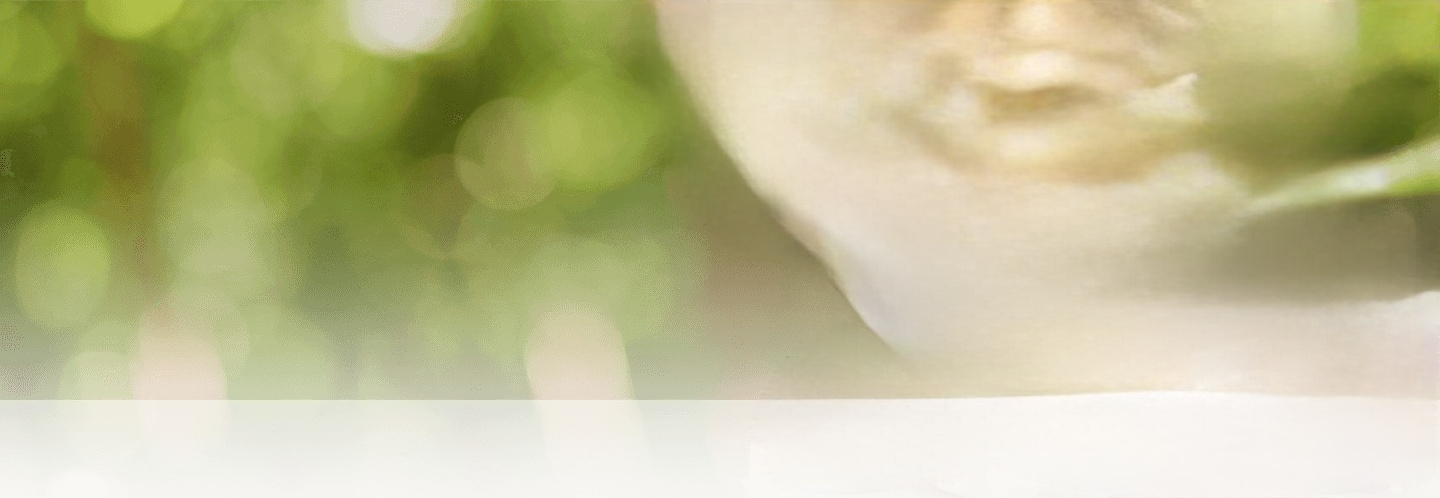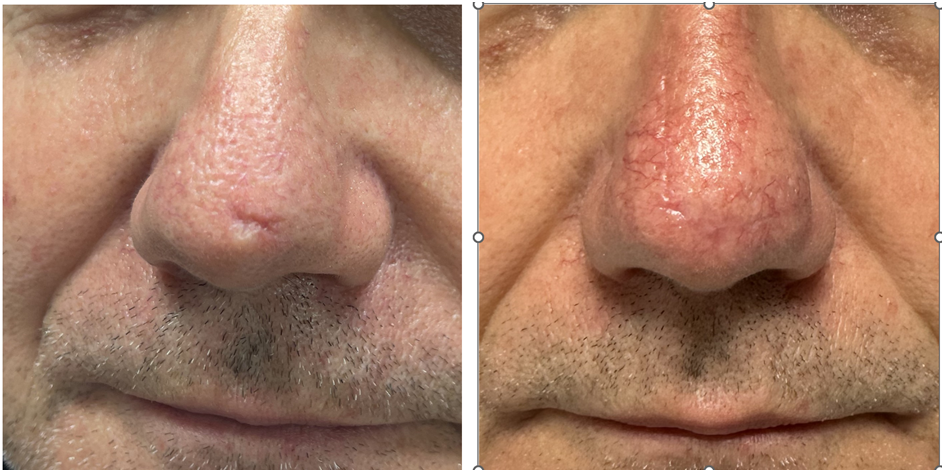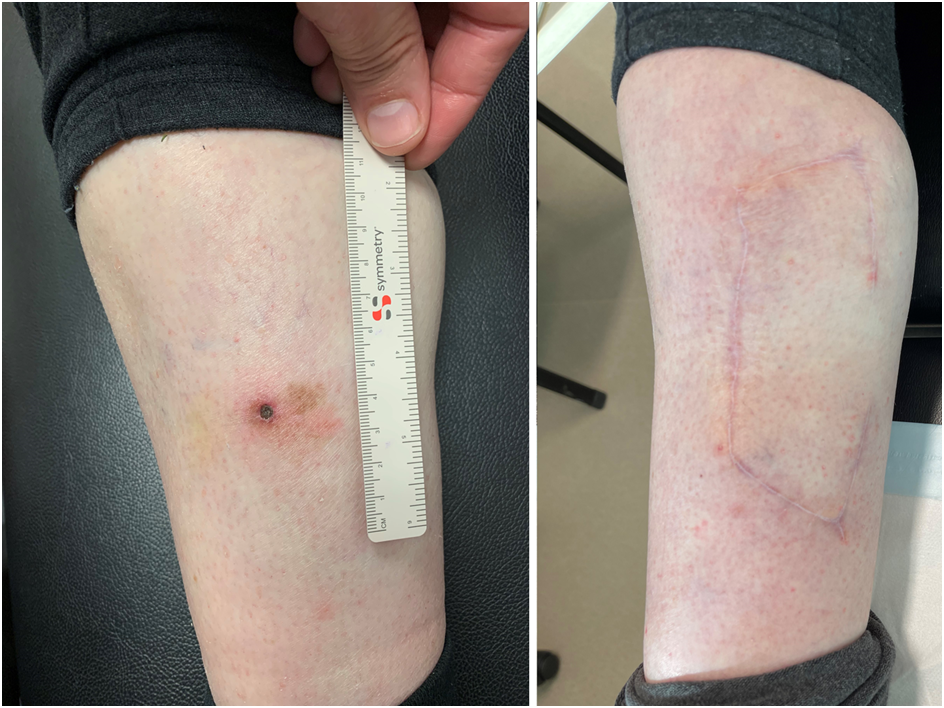Local Flap Surgery for Skin Cancer
Flap reconstruction is a surgical technique used to repair small to medium size skin defects caused by the removal of skin cancer. It involves moving a flap of skin from an area near where the skin cancer has been removed into the defect created by removing the skin cancer.There are some common geometric patterns for designing local flaps on various parts of the body. Because the skin of the flap is adjacent to the skin being removed, the colour match is usually excellent. Local flap surgery commonly avoids the colour mismatch and contour deformities which can occur with skin graft surgery. Local flaps use the reconstructive ideal of “replacing like with like”. Flap reconstruction is a versatile and effective option for reconstructing various types and sizes of skin defects, particularly those in cosmetically sensitive areas like the face, lower legs or hands.
Flap surgery is usually performed under local anaesthetic (ie you are awake and local anaesthetic needles are used to make the area numb). The skin cancer is removed, and the local flap is planned, raised and moved into the defect. The wound is then put back together again with stiches. For most flaps, you will be allowed to shower normally over the wound from the following day, and apply Vaseline to the stiches twice a day. If the stiches are on the face, they will be removed the following week. If the stiches are on the scalp or limbs, then they normally stay in place for two weeks.
Before and After Photos
Here before and after photos of some of A/Prof Marucci’s patients treated with local flap reconstruction following skin cancer excision:
Potential Risks and Complications:
The risks of local flap reconstruction for skin cancer are similar to those of any procedure where things are excised and then stitched back together.
- Infection:
Any surgical procedure introduces a risk of infection, especially in areas prone to environmental exposure. Antibiotics are commonly prescribed for patients have a local flap reconstruction. - Bleeding:
Some bleeding is typical during surgery, but excessive bleeding can occur either during or afterwards. Normally firm pressure over the wound for 10 minutes with clean tissues will stop any bleeding. Should bleeding persist, please contact A/Prof Marucci. - Scarring:
All surgical procedures result in permanent scars – but the goal of plastic surgeons, like A/Prof Damian Marucci, is to make the scars as neat and inconspicuous as possible. The appearance of scars can vary depending on factors such as genetics, skin type and if there were issues with wound healing. Smoking is very bad for scars. Some scars can be raised, others can stretch. Sometimes the scars can be indented and sometimes there is a lump at the end of the scar called a “dog ear”. All scars mature and tend to settle with time – although this process can take up to a year. - Wound Dehiscence:
Despite a surgeon’s best efforts, sometimes the wound may partially or completely open up. Should this occur, let A/Prof Marucci know. Normally this situation can be managed with simple dressings, like Vaseline and gauze (allowing the wound to heal from the bottom up). Re suturing the wound straight away is only rarely a good idea – letting it heal on its own and then tidying up the resulting scar later is often the best approach. - Wound Healing Problems:
Occasionally there can be wound healing problems around the edge of the flap. Sometimes this requires dressings with Vaseline and gauze. If a large raw wound results, sometime further reconstruction is required.
Minimizing Scarring After Local Flap Surgery for Skin Cancer:
A. Proper Wound Care:
- Follow Postoperative Instructions: Patients should adhere to the A/Prof Marucci’s instructions for wound care. You will be given written instructions on the day of surgery.
- Avoiding Infection: Preventing infection is crucial for minimizing scarring. You should shower over the wound as instructed and clean the area with soap and water as instructed.
B. Suture Removal:
- Timely Removal: Sutures are typically removed within a week (for wounds on the face) or two weeks (for wounds elsewhere on the body including the scalp) after surgery. Timely removal is essential for optimal healing.
- Supportive Measures: After the sutures have been removed, you need to keep the wound moisturised. For scars on the face, continuing to apply Vaseline or another moisturiser is important. Three weeks after your surgery, you can start to massage the scars with either silicone gel, bio-oil or Vitamin E cream (DO NOT massage a scar before 3 weeks, otherwise the wound could re-open).
C. Scar Massage:
- Gentle Massage: Massaging the healed scar after three weeks with moisturizing cream or oil can help break down scar tissue and improve the appearance of the scar.
- Start Gradually: Scar massage should begin once the wound is fully healed at the 3 week mark, and the skin has closed. If you are using silicone gel, follow the directions on the packet. IF you are using Bio-Oil or Vitamin E cream, start with gentle pressure and gradually increase this over time.
D. Sun Protection:
- Avoid Sun Exposure: Sun exposure can exacerbate scarring. Patients should protect the healing wound from direct sunlight and use sunscreen on the scar once it has fully closed. Slip, slop, slap!
- Clothing and Accessories: Wearing hats or clothing that covers the scar can provide additional protection from the sun.
E. Scar Management Products:
- Silicone-based Products: Silicone sheets or gels have been shown to be effective in minimizing scarring. Use them as directed on the packet.
- Topical Creams and Ointments: Some over-the-counter creams and gels, like Vitamin E cream and Bio-Oil are also good for scars.
Conclusion
Flap reconstruction is a valuable tool for reconstructing skin defects following skin cancer removal. It offers a variety of techniques to address various types and sizes of defects, particularly in cosmetically sensitive areas. While flap reconstruction can be associated with certain risks and complications, it is generally a safe and effective procedure with a successful outcome. A/Prof Marucci will work closely with you to determine if flap reconstruction is the right option for you and will provide comprehensive care throughout the process.


